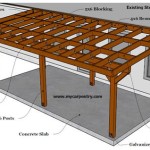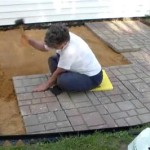Essential Aspects of Pouring a Small Concrete Patio
Transforming your outdoor space with a concrete patio can enhance its functionality and aesthetics significantly. Whether you envision a cozy spot for relaxation or a gathering area for entertainment, pouring a small concrete patio is a worthwhile endeavor. Here are essential aspects to guide you through the process:
1. Planning and Preparation
Before embarking on the project, plan the dimensions and location of your patio. Measure and mark the area, ensuring proper drainage and accessibility. Clear the space of vegetation, debris, and any obstacles.
2. Excavation and Formwork
Excavate the area to a depth of 6-8 inches, creating a level base for the concrete. Set up formwork along the edges of the excavation using wood planks or metal stakes. The formwork will contain the concrete and maintain its shape.
3. Compacting the Soil
Compact the soil within the excavated area using a hand tamper or a vibrating plate compactor. This step ensures a stable base for the concrete and prevents cracking.
4. Installing Reinforcement
To enhance the strength and durability of the patio, place wire mesh reinforcement over the compacted soil. Secure the mesh with wire ties or stakes.
5. Installing Gravel Base (Optional)
For improved drainage, consider installing a gravel base. Spread a 2-3 inch layer of gravel over the soil and compact it. This base allows water to percolate through, reducing the risk of damage caused by freezing and thawing cycles.
6. Pouring the Concrete
Mix the concrete according to the manufacturer's instructions. The ideal consistency should be slightly runny, allowing it to flow into the formwork easily. Pour the concrete onto the gravel base or directly onto the compacted soil, ensuring a uniform thickness throughout.
7. Finishing the Surface
After pouring the concrete, smooth the surface using a trowel or a screed board. Create desired textures or patterns by using a broom or a stamp. Avoid overworking the surface as this can weaken the concrete.
8. Curing and Sealing
Once the concrete has set, allow it to cure for several days. Keep it moist by covering it with plastic sheeting or spraying it regularly with water. After curing, seal the patio with a concrete sealer to protect it from moisture and discoloration.
9. Expansion Joints
To accommodate temperature and moisture fluctuations, create expansion joints in the concrete. Insert pieces of foam or a backer rod into the joints before pouring the concrete. Ensure the joints are spaced evenly and extend through the entire depth of the slab.
10. Maintenance and Cleaning
Preserve the beauty and functionality of your concrete patio through regular maintenance. Clean it periodically with a hose or a pressure washer. Apply a fresh coat of sealant every few years to protect it from the elements.
By following these essential aspects, you can create a durable and inviting concrete patio that will complement your outdoor space for years to come.
Concrete Pad For Beginners Diy

Pour A Concrete Slab

How To Pour A Small Concrete Slab Lazy Guy Diy

Placing A Small Concrete Slab Fine Homebuilding

How To Pour A Small Concrete Slab Lazy Guy Diy

Diy Concrete Patio In 8 Easy Steps How To Pour A Cement Slab

Placing A Small Concrete Slab Fine Homebuilding

How To Pour A Small Concrete Slab Lazy Guy Diy

12 Diy Concrete Slab Mistakes To Avoid When Pouring Network

Quikrete Building A Concrete Patio
Related Posts








